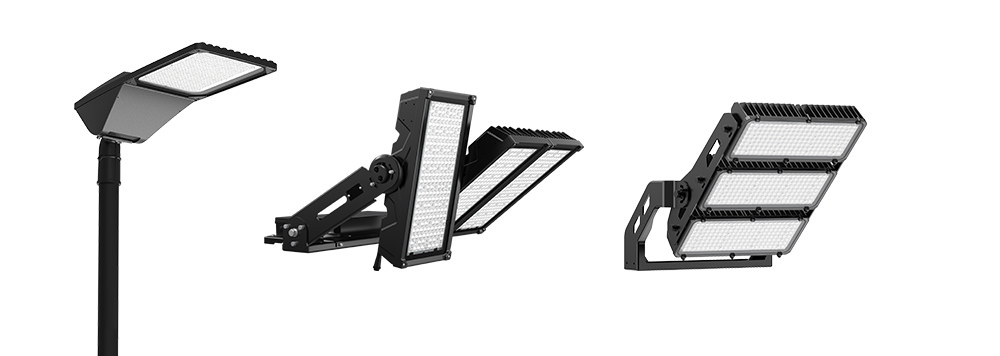In outdoor lighting design, LED luminaires with asymmetric lighting offer a multitude of advantages that result in more efficient, versatile, and eco-friendly illumination solutions. This article explores the key advantages of LED asymmetric lighting in outdoor applications.
1. Precise Directional Illumination
Asymmetric lens design enables LED luminaires to precisely project light to the areas that require illumination, concentrating light on specific targets, thus minimizing light wastage. This is especially beneficial for lighting up roads, pathways, buildings, or specific outdoor features, enhancing lighting effectiveness.
2. Energy Efficiency and Efficacy
Asymmetric lighting technology contributes to improved energy efficiency. By controlling light distribution accurately, LED luminaires can project light precisely where needed, preventing unnecessary light pollution and energy wastage. This results in reduced energy costs and a decreased demand for electrical resources.

3. Reduction of Light Pollution
Asymmetric lens designs help reduce light pollution, particularly in urban and residential areas. By confining light to target areas, LED luminaires prevent excessive light spill into the surrounding environment, preserving natural landscapes and star visibility during the night.
4. Precise Light Control
Asymmetric lighting technology offers precise control over light distribution. Designers and engineers can customize lenses to adjust the angle and intensity of light, tailoring it to achieve optimal lighting effects for various outdoor environments and applications.
5. Enhanced Safety
Asymmetric lighting technology enhances safety in outdoor settings. By concentrating light on pathways, sidewalks, or traffic routes, LED luminaires provide brighter and more visible illumination, reducing the risk of nighttime accidents.
6. Aesthetic Enhancement
Asymmetric lens design not only improves lighting efficiency but also adds to the aesthetics of outdoor spaces. It can be used to accentuate specific landmarks, buildings, or landscape features, creating impressive visual effects.
In conclusion, LED luminaires with asymmetric lighting offer numerous advantages in outdoor lighting, including precise directional illumination, energy efficiency, light pollution reduction, precise light control, improved safety, and aesthetic enhancement. This technology not only provides more efficient lighting solutions but also contributes to environmental preservation and the enhancement of outdoor spaces. It plays a crucial role in modern outdoor lighting design.















